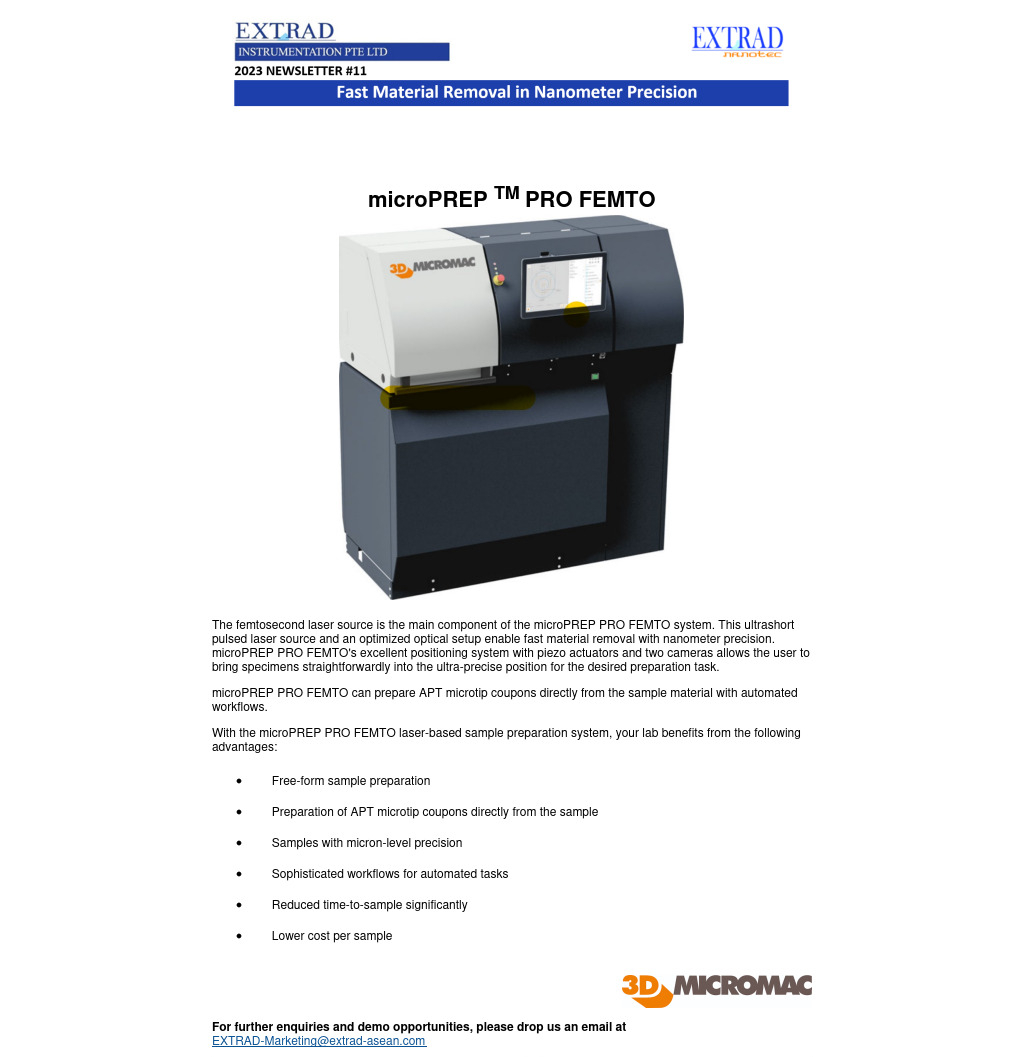Life Science & Material Research
- Home
- portfolio
- Market Segments
- Life Science & Material Research
Providing sophisticated analytical tools to advance research, product development and quality in the Nanotechnology industry
Nanoscience and nanotechnology are the study and application of extremely small things and can be used across all the other science fields, such as chemistry, biology, physics, materials science, and engineering. Today’s scientists and engineers are finding a wide variety of ways to deliberately make materials at the nanoscale to take advantage of their enhanced properties such as higher strength, lighter weight, increased control of light spectrum, and greater chemical reactivity than their larger-scale counterparts. Following are some applications from our products.
Discover how our innovative analytical solutions and services improve all areas of semiconductor, Integrated Circuitry and electronics manufacturing, from process development, process monitoring, QA/QC and failure testing, to assembly and packaging.
Research, Studies, Papers and Applications
Collection Pro: Automatic Grain Manipulation System with AI AI Deep Learning is becoming a common method for advanced image analysis in science and engineering. We would like to introduce an […]
The ultralow friction between atomic layers of hexagonal MoS2, an important solid lubricant and additive of lubricating oil, is thought to be responsible for its excellent lubricating performances. However, the […]
High-precision metal cutting is increasingly relevant in advanced applications. Such precision normally requires a cutting feed in the micron or even sub-micron dimension scale, which raises questions about applicability of […]
A new method has been developed to precisely cut and to sharpen carbon nanotubes using a “nanoknife”, which is a short carbon nanotube adhered to a metal tip. The mechanism […]
We report the observation of a novel phenomenon, the self-retracting motion of graphite, in which tiny flakes of graphite, after being displaced to various suspended positions from islands of highly […]
Abstract The K3Sb4BO13 (KSBO) material undergoes an uncommon symmetry increase upon cooling, from triclinic symmetry at room temperature to monoclinic symmetry at low temperature. The first-order phase transition is accompanied by […]
Abstract Metal catalysts play an important role in industrial redox reactions. Although extensively studied, the state of these catalysts under operating conditions is largely unknown, and assignments of active sites […]
Abstract Recent developments in electron-transparent materials have paved the way for liquid-phase electron microscopy (LPEM) leading to an unprecedented understanding of the structure and dynamics of specimens in their liquid […]
Abstract The outbreak of a novel coronavirus (2019-nCoV) represents a pandemic threat that has been declared a public health emergency of international concern. The CoV spike (S) glycoprotein is a […]
In this study, chitosan-based bio-flame retardant additive (referred to as NCS) was prepared by altering the chitosan (CS) chemically with silica (S) via ion interchange reaction and studied the effect […]
In this manuscript, we have studied the structural, electrical and thermoelectric properties of bulk ZnSnO by post growth annealing method. X-Ray Diffraction data showed that the crystallinity was found to […]
Abstract The current study focused on the improvement of thermoelectric properties of Cu2ZnSnS4 (CZTS) thin films grown by the chemical solution method by our engineering other secondary phases. The density of […]
Abstract In this study, the sound absorption coefficient of three low density hardwoods – binuang, balsa and paulownia – were investigated. Their gas permeability and pore size were measured, and their pore […]
Abstract We investigated the effect of ultrasonic treatment on Malas (Homalium foetidum) gas permeability and sound absorption coefficient using the transfer function method. Results showed a longitudinal average Darcy permeability […]
Abstract Adsorbent-containing kapok fiber membranes with high burning rates were developed to remove radionuclides and toxicants from liquid wastes and reduce the total waste volume. The zeolite-fiber membranes were made […]


















